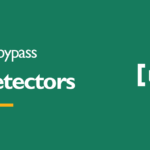Content strategies fail all the time due to a lack of planning. Regardless of your content management expertise, you still need to track and plan your content — with a calendar.
Sounds obvious, right? But you wouldn’t believe that only 32% of e-commerce companies use a content calendar.
And it gets worse with one-person bloggers. No blogger wants to go through the hassle of creating a calendar for their content marketing strategy.
Although this freestyle technique sometimes works, following a predefined timeline restores order to your content plan. Even tech giants and multinational companies follow strict content publication timetables across all platforms.
This article defines a standard content curation calendar. You will also discover the benefits of following a strict content timetable as an individual or a marketing team.
What is a content calendar?
A content calendar refers to an editorial timetable that documents your content creation and marketing plan in detail. This calendar contains the dates, platforms, and promotional strategy for your content.
Most companies (and individual bloggers) use a universal calendar to arrange their marketing plans alongside their content ideas. But others use separate planners for both tasks. You should choose the strategy that suits you best.
Besides, most marketers plan their marketing efforts with Excel or Google Sheets. These spreadsheet services can suffice, but you can use specialized tools like CoSchedule to curate your timetable.
I prefer the Google Sheets approach because it is free and accessible.
What should the content calendar contain?
The arrangement of your content calendar depends on your marketing strategy. You can limit the constituents to topics and dates. Nevertheless, you need to store as much information as possible.
Let’s check out the data in my content marketing calendar.
- Dates — Your calendar should display submission deadlines and publication dates.
- Type of content — Specify if the publication is a blog post, social media article, email newsletter, or visual content.
- Status and progress reports — Monitor published and unpublished posts to streamline your future strategies. Collect engagement data to make consumer-oriented adjustments.
- Ideas — Write every content idea in the calendar.
- Assignees and reporters — Specify the individuals responsible for creating, editing, and publishing the content.
- Links — Add URLs to authoritative sources of information and internal links. Document the links to your social media profile.
You can add extra information to your calendar. Also ensure to keep every team member or individual on the same page.
Benefits of using a content calendar
Although most people can play 4D-chess with their content, a plan will only enhance the workflow. So, let’s check out the benefits of creating and curating content calendars across the board.
1 — Keeps your content objectives in view
A properly curated content calendar brings the company’s objectives in view. The detailed plan helps you track every aspect of the content marketing and publication strategy. And as a result, you will always meet deadlines to maximize your productivity.
But in the absence of a content calendar, you can only freestyle the entire process. Although this might work for your small blog or social media, you can lose that consistency with time.
Moreover, keeping your content plan in clear view highlights possible content gaps and redundancies. In essence, a comprehensive content calendar addresses these issues and iron out bottlenecks in the workflow.
2 — Enhances the ideation process
With a detailed calendar, you can spot areas that need improvement. At the same time, you can quickly discover the topics that you should prioritize. So, this view helps you to come up with fresh and innovative ideas.
Moreover, gathering engagement data from social media also provides insights into consumer engagement. You can pinpoint your audience’s interests based on their reactions and comments. And eventually, this information will inform your decision-making process.
Besides, a repository for your ideas often comes in handy during brainstorming sessions. Since you already have an idea bank, you can escape the creative rut faster than usual. And most importantly, contributors on your team can also provide their input during ideation exercises.
3 — Keeps the audience engaged
Consistency is key to your content creation strategy: it creates a sense of anticipation within your consumer pool. So, you need to satisfy this craving with top-notch content consistently.
But without a specified timeline, your audience won’t know when to expect your post. And with time, they will move on to other sources to satisfy this craving for fresh and engaging content — the OSOM (out of sight out of mind) dilemma.
To avoid this OSOM problem, use content calendars to establish a consistent publication timetable. Ultimately, monitor the progress of this calendar and avoid repetition.
4 — Curates your timeline and workflow
Content calendars are great for your time management efforts. They help you track timelines and track project statuses. You also get to specify and monitor deadlines for every task or project on the calendar.
Besides, you can also monitor the people working on every project. And this clear picture will help you manage every team member’s workload. As a result, you can distribute tasks evenly to every project contributor.
Essentially, a content calendar streamlines your workflow by eliminating overlapping deadlines. It also harnesses the team’s optimum performance to provide the best possible content every time.
And when used properly, the content calendar keeps your marketing strategy on track.
5 — Provides a universal picture of the marketing strategy
When working with an all-encompassing content calendar, you get a clear picture of the entire marketing strategy at a glance. In large teams, every creator, editor, and publisher can contribute and visualize project success.
Besides, this centralized system enables transparency in the organization. The calendar highlights employee performance by monitoring trackable metrics and personal benchmarks.
Most importantly, content calendars help businesses and individuals to evaluate their content strategies. Since you have the metrics in clear view, you can fine-tune your plan to address inefficiencies.
Ultimately, you can measure the content marketing strategy’s success to determine if it aligns with the project’s outlined objectives.
Can the content planning calendar be a problem?
A content calendar can be a progressive or regressive tool in the marketing strategy, depending on its implementation.
Don’t expect content marketing calendars to provide a magical solution to your lackluster business practices.
Even if you integrate the most advanced content calendar tool into your workflow, you still need to harness its full potential through proper planning.
But this is never the case in most content strategies. Bad decisions and improper planning can make the content calendar work against you. So, let’s go through the problems associated with content calendars.
- Most content calendars follow strict deadlines, and this lack of flexibility forces the company to rely on outdated promotional strategies to compete.
- The ‘calendar’ mindset limits creativity because the ideas get stuck in a time capsule.
- Ever-changing algorithms necessitate a constant revision of the content calendar to stay in touch.
- Content managers often use the shotgun approach to fill content gaps, which leads to monotonous and lackluster content.
- Different departments have separate content calendars, leading to conflicting strategies.
With a better understanding of these problems, you can avoid them when crafting a comprehensive content plan. Adopt a flexible mindset to address changes in marketing trends and eliminate content creation staleness.
You should also schedule regular calendar revisions to address changes in the company’s objectives and consumer behavior. Engage with your audience and streamline your content to their interests.
Ultimately, use a central content calendar across the organization to eliminate overlapping responsibilities and improve employee performance.
Final words
Content creation requires meticulous planning and execution to succeed. You need a content calendar to curate and monitor your content marketing strategy.
However, improper implementation of the content calendar leads to workflow issues. It also hinders the growth of your blog or business and decreases your team’s performance.
So, you need to implement an all-encompassing, data-intensive calendar to monitor your content. Don’t forget to gather data from your audience to inform your decision. Specify deadlines but be ready to adjust to changing content marketing and promotion trends.
Give your content the best chance to flourish. Start working with a content marketing calendar today!
Who wrote this?
As the owner and editor of SomebodySays, Ugo Ezenduka shows readers the fundamentals of content writing and blogging to help them adapt to the ever-changing landscape.
He has collaborated with several IT and publishing companies to create articles and blog posts that customers crave. When he is not in front of a screen, Ugo can be spotted somewhere with a camera or on a football pitch.




